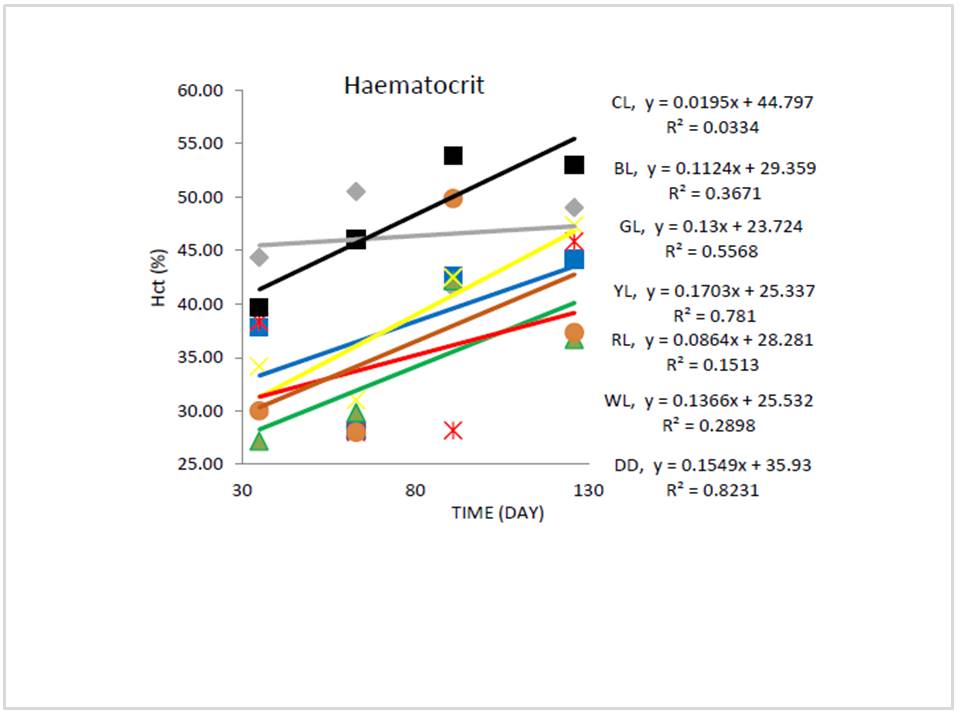Title
Assessment of Haematological Variation in Rat Bred Under Various Artificial Light Spectra at Night (ALAN)
Authors
Festus Olasehinde Kehinde,*a Gabriel Adewunmi Dedeke,a Matthew Ayokunle Olude,b Adeyinka Adedeji Aladesidaa and Kehinde Oluwatoyin Ademolua
aDepartment of Pure and Applied Zoology, College of Biosciences, Federal University of Agriculture, Abeokuta, Nigeria.
bDepartment of Anatomy, College of Veterinary Medicine, Federal University of Agriculture, Abeokuta, Nigeria.
*Corresponding author E-mail address: kehindefo@funaab.edu.ng (Kehinde F.O.)
Article History
Publication details: Received: 01st April 2022; Revised: 26th April 2022; Accepted: 26th April 2022; Published: 05th May 2022
Cite this article
Kehinde F.O.; Dedeke G.A.; Olude M.A.; Aladesida A.A.; Ademolu K.O. Assessment of Haematological Variation in Rat Bred Under Various Artificial Light Spectra at Night (ALAN). Green Rep., 2022, 3(8), 1-6.

Abstract
Artificial light at night is considered as environmental stressor depending largely on the spectra. Haematological parameters have been used as bio-indicator of stress when animals are subjected to unfavourable environmental condition. Hence this study evaluated the effect of various spectra of light on the haematology of albino rats. Day old rats were exposed to blue (BL), green (GL), yellow (YL), red (RL) and white (WL) lights at night while darkness (DD) and ambient light (CL) served as control. Compact florescent bulbs were used and light intensity maintained at 300 lux. At days 35, 63, 91 and 126, six rats per treatment and per sex were euthanized. Blood was collected and analysed for haematocrit (Hct), haemoglobin (Hb) and red blood cells (RBC). At d35 and d63, Hct and Hb and RBC were significantly (p < 0.05) low in male and female rats exposed to coloured light. Hct and Hb recorded in the male rats exposed to green light and female rats exposed to blue and green lights were lower than the normal physiological range for rats at these ages bracket. Further exposure to light at d91 and d126 showed no negative effects on blood parameters. Linear regression showed significant increase in the blood parameter with time on exposure to coloured light which together signifies adaptation. Exposure to light of high energy (BL and GL) and WL during prepubertal could be detrimental. Normal day and night light cycle provided the optimum environmental lighting condition for adequate homeostatic of the blood in rats.
Keywords
Rat; ALAN, spectra; haematocrit; haemoglobin; Red Blood Cell